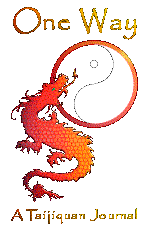
|
QiGong
"Qi" (pronounced CHEE) meaning "air," or "energy," and "gong" (pronounced GUNG) meaning "work," QiGong is a fairly modern term for a practice believed to be over 2,000 years old. It has had other names in the past, such as tu gu na xin, "expelling the old energy, absorbing the new," or tao-yin, "leading and guiding the energy." There are around 7,000 different QiGong breathing exercises. The ultimate source of Chinese medical knowledge, The Yellow Emperor's Classic of Internal Medicine, (200 BC), prescribed QiGong for curing and preventing illnesses. Today, in traditional Chinese hospitals physicians may prescribe a QiGong exercise to help heal a problem, much as a Western doctor might prescribe a drug. Wai Qi Zhi Liao is the term for External QiGong. Modern Theraputic Touch used in many Western hospitals is a form of External QiGong. "What is QiGong? The purpose of QiGong is to let go of energy blocks by relaxing the mind, body, and emotions. Although T'ai Chi shares this purpose, there are QiGong exercises that are not T'ai Chi.... QiGong differs from standard meditations but shares many of their healing potentials. QiGong can be used as therapy for specific conditions, as well as a general tune up. Also, we can actually heal another person with the life energy QiGong fills us with."When practicing QiGong: All QiGong exercises should be performed slowly, in rhythm with your own breathing, and you should remain as relaxed as possible throughout. Tension will block the flow of chi. Also, when breathing, inhale through the nose, and with the tip of the tongue touching the roof of the mouth, just behind the front teeth; and exhale through the mouth, allowing the tongue to drop naturally. Placing the tongue to the roof of the mouth completes the circuit for chi energy flowing from the Root or Base Chakra, up the spine, over the top of the head, down the front of the body, back to the Base Chakra. Blocking the flow of chi at the mouth can give you a headache. Main QiGong Energy Transfer Points:
An Interesting Aside: French kissing is a Chinese invention. Women have an energy transfer point, the "Jade Well," beneath their tongues. Chinese men sought to tap this energy by touching their tongues to it.
QiGong: The Exercises
|